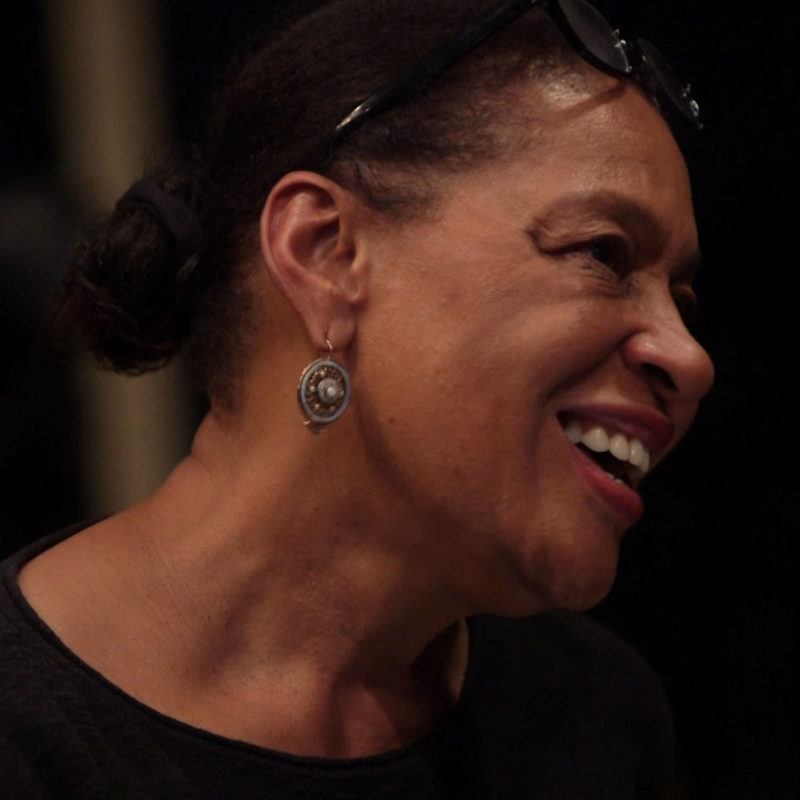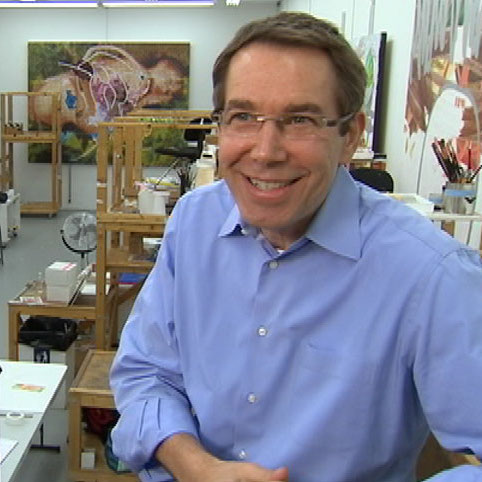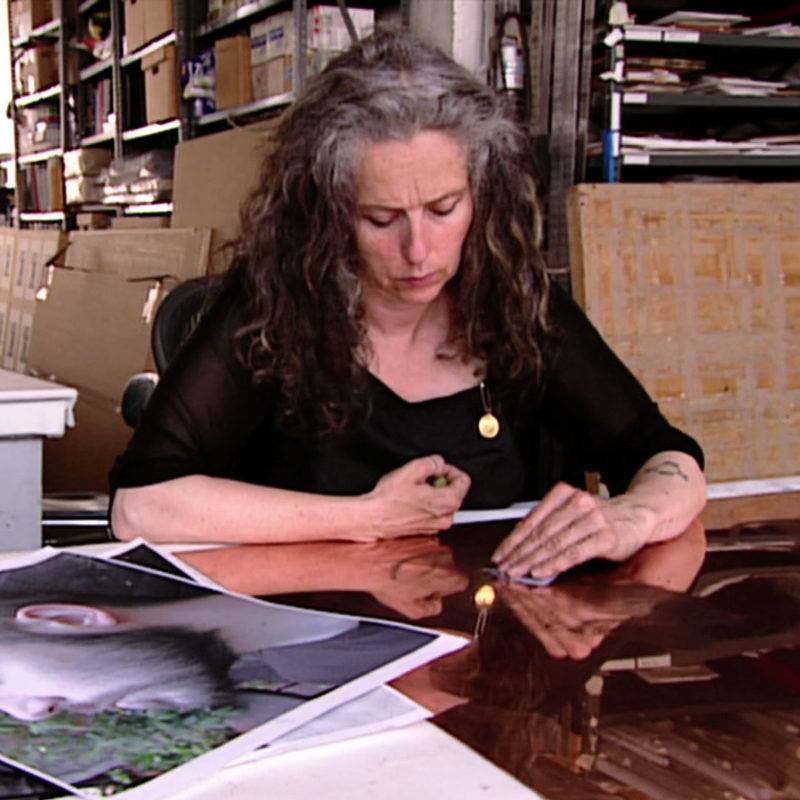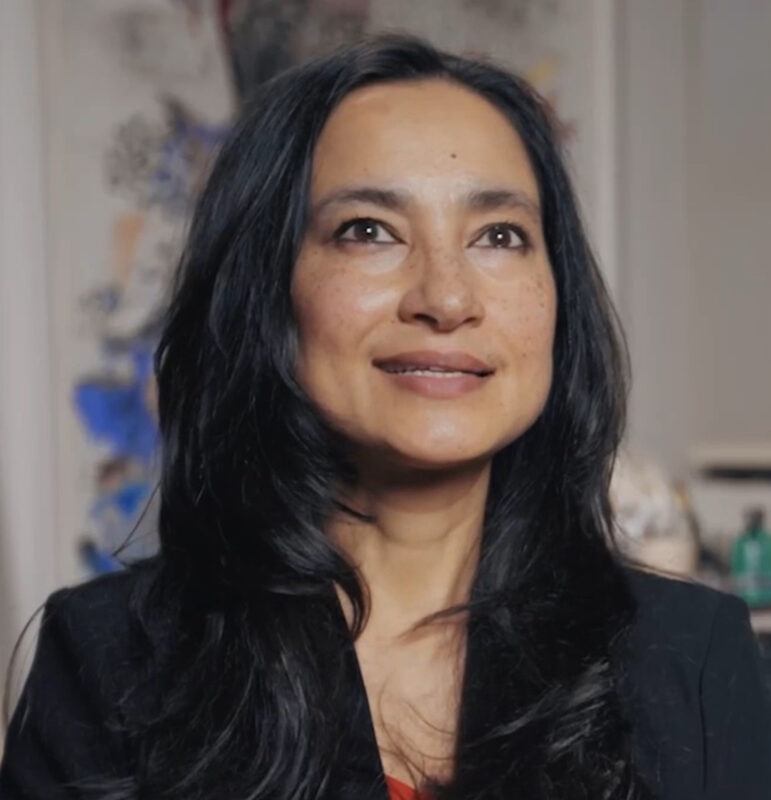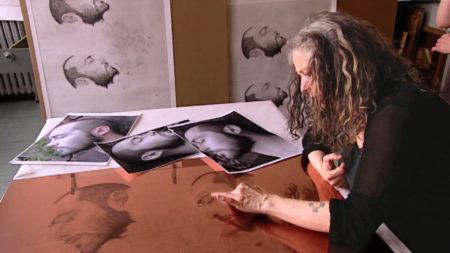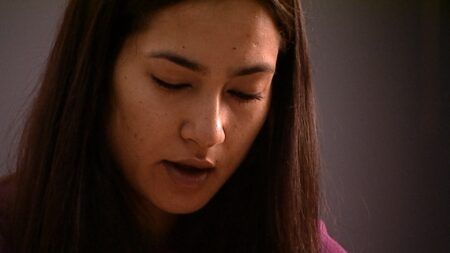Continue playing
(Time remaining: )
Play from beginning
Continue playing "{{ controller.videos[controller.getVideo(controller.currentVideo)].segmentParentTitle}}"
{{controller.videos[controller.getVideo(controller.currentVideo)].title}} has ended.
U.S. Department of State Honors Five Art21 Featured Artists
Beginning in November 2012, the U.S. Department of State celebrates the 50th anniversary of Art in Embassies (AIE), a program that facilitates the Department of State’s public diplomacy through the power of the visual arts.
As part of the celebration, U.S. Secretary of State Hillary Rodham Clinton will honor five artists—Cai Guo-Qiang, Jeff Koons, Shahzia Sikander, Kiki Smith, and Carrie Mae Weems—by awarding each artist with the U.S. Department of State’s inaugural Medal of Arts. The Medal of Arts is given in recognition of each artist’s outstanding commitment to the AIE program and international cultural exchange.
Over the last decade, Art21 has worked closely with all five honorees, each of whom has extended their relationship with our organization beyond their initial filming sessions for the “Art in the Twenty-First Century” series. We have experienced first-hand each artist’s passionate commitment to facilitating dialogue through visual art, across many cultures. Through our own international screening programs, we have witnessed conversations generated by the work and words of these artists in communities around the world.
Art21 is proud to support these artists in their commitment to cross-cultural dialogue, and we congratulate each artist—Cai Guo-Qiang, Jeff Koons, Shahzia Sikander, Kiki Smith, and Carrie Mae Weems—for receiving this very special recognition for their efforts from the U.S. Department of State.
Closed captionsAvailable in English, German, Romanian, Italian, Japanese, Korean, Chinese, Italian
Through the Art21 Translation Project, multilingual audiences from around the globe can contribute translations, making Art21 films more accessible worldwide.
Interested in showing this film in an exhibition or public screening? To license this video please visit Licensing & Reproduction.
Accomplished in a variety of media, Cai Guo-Qiang began using gunpowder in his work to foster spontaneity and confront the controlled artistic tradition and social climate in China. While living in Japan from 1986 to 1995, he explored the properties of gunpowder in his drawings, leading to the development of his signature explosion events. These projects, while poetic and ambitious at their core, aim to establish an exchange between viewers and the larger universe. For his work, Cai draws on a wide variety of materials, symbols, narratives, and traditions: elements of feng shui, Chinese medicine and philosophy, images of dragons and tigers, roller coasters, computers, vending machines, and gunpowder.
Carrie Mae Weems’s vibrant explorations of photography, video, and verse breathe new life into traditional narrative forms like social documentary, tableaux, self-portrait, and oral history. Eliciting epic contexts from individually framed moments, Weems debunks racist and sexist labels, examines the relationship between power and aesthetics, and uses personal biography to articulate broader truths. Whether adapting or appropriating archival images, restaging recognizable photographs, or creating altogether new scenes, she traces an essential indirect history of the depiction of African Americans for more than a century.
Jeff Koons plucks images and objects from popular culture, framing questions about taste and pleasure. His contextual sleight-of-hand, which transforms banal items into sumptuous icons, takes on a psychological dimension through dramatic shifts in scale, spectacularly engineered surfaces, and subliminal allegories of animals, humans, and anthropomorphized objects. Organizing his own studio production in a manner that rivals a Renaissance workshop, Koons makes computer-assisted, handcrafted works that communicate through their meticulous attention to detail.
In the 1980s, Kiki Smith literally turned the figurative tradition in sculpture inside out, creating objects and drawings based on organs, cellular forms, and the human nervous system. This body of work evolved to incorporate animals, domestic objects, and narrative tropes from classical mythology and folk tales. Life, death, and resurrection are thematic signposts in many of Smith’s installations and sculptures. The recurrent subject matter in Smith’s work has been the body as a receptacle for knowledge, belief, and storytelling.
Shahzia Sikander specializes in Indian and Persian manuscript painting, a traditional, technique-driven style that Sikander imbued with a personal context and history, blending the Eastern focus on precision and methodology with a Western emphasis on creative, subjective expression. In doing so, Sikander transported manuscript painting into the realm of contemporary art. Expanding the manuscript painting to the wall, Sikander also creates murals and installations, using tissue-paper-like materials that allow for a more free-flowing style. Utilizing performance and various media and formats to investigate issues of border crossing, she seeks to subvert stereotypes of the East and, in particular, the Eastern Pakistani woman.
Cai Guo-Qiang
Cai Guo-Qiang
Preview
Carrie Mae Weems
Carrie Mae Weems
Carrie Mae Weems
Jeff Koons
Jeff Koons
Jeff Koons
Kiki Smith
Kiki Smith
Kiki Smith


